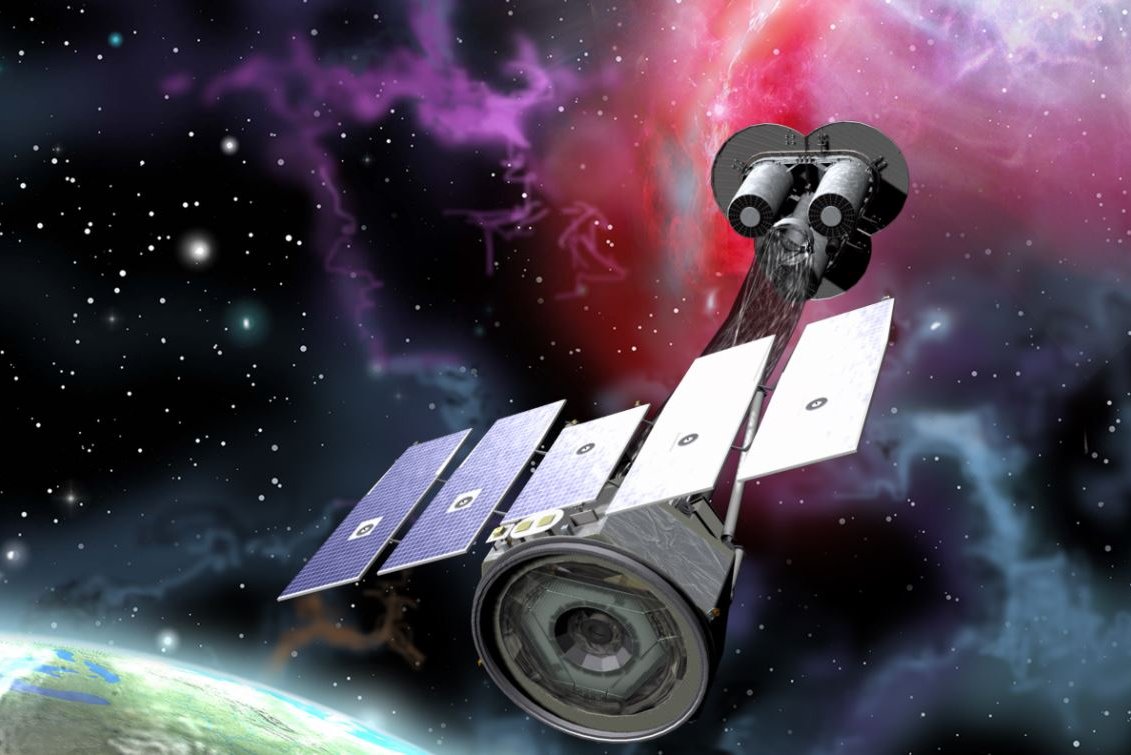
1 of 2 | An illustration depicts NASA’s IXPE satellite pointed at a nebula in space with three identical X-ray optics imagers at top, sensors at bottom and solar arrays. Collaborating with the Italian Space Agency, the NASA team launched it into orbit 372 miles above the Earth in 2021. Illustration courtesy of NASA
Along with their teams, retired NASA astrophysicist Martin Weisskopf and Italian Space Agency principal investigator Paolo Soffitta were awarded the 2024 Bruno Rossi Prize by the High Energy Astrophysics Division of the American Astronomical Society for IXPE’s development.
Collaborating with the Italian Space Agency, the NASA team launched the telescope into orbit 372 miles above the Earth in December 2021. It gave scientists a better look at quasars, pulsars and black holes, among other study targets in space, in the hope of learning more about how the universe works.
“IXPE is a realization of decades of work and belief in the importance of X-ray polarization measurements for X-ray astronomy,” Weisskopf, who served as IXPE’s principal investigator before he retired in 2022, said in a statement released by NASA.
Weisskopf previously had received in 2004 the Rossi Prize — annually awarded for recent and significant contributions to high-energy astrophysics — for his work to develop and fly NASA’s Chandra X-ray Observatory, which continues to study high-energy X-ray phenomena across the cosmos.
“IXPE is the demonstration of how an idea pursued for more than 30 years has been transformed into a successful mission, thanks to the collaboration between the United States and Italy,” said Soffitta from Italy’s space agency.











